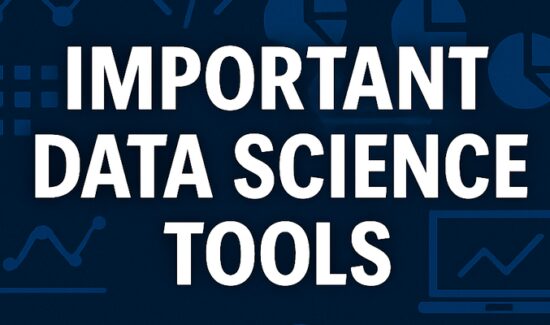How AI Has Fundamentally Changed Business Data Analytics Workflows


Pyramid Analytics’ Omri Kohl offers commentary on how AI has fundamentally changed the business data analytics workflow. This article originally appeared in Insight Jam, an enterprise IT community that enables human conversation on AI.
AI has been massively successful in data analytics, but there’s a risk that it could lead enterprises down the wrong path.
Tech leaders are keen to draw on vibe coding, with advanced AI engines powered by custom agents that are more easily accessible and at lower costs. This allows them to connect a custom chatbot or AI agent with their databases and leave the AI to answer questions for decision-makers and stakeholders. However, unless your AI engine is connected to a proven decision intelligence engine that’s connected to well-prepared data sources, it’s likely to return answers that are untrustworthy and inaccurate.
No, AI hasn’t killed the business intelligence star – it’s just made BI better. The enterprises that see the most value from their business data analytics workflows today are tapping into the multiplied power of BI combined with AI. Integrating AI into BI improves BI capabilities throughout the analytics lifecycle, from data intake and preprocessing to conversational analytics, automated reporting, and real-time insights.
Here are the primary ways that AI can (and should) be used to make all aspects of data analytics better. When you put them all together, a new picture emerges of AI fundamentally changing how companies tackle business analytics.
AI Extends Data Collection
As data analytics operations expand, they become hungry for more data. Although data is increasing relentlessly, analysts can still struggle to find suitable, valuable data. AI-assisted intake can help to increase the data sources that teams consider incorporating into their analyses.
AI can bring together data that might otherwise be siloed in inaccessible locations and only examined in isolation, thereby improving data integration. It adds unstructured data such as videos, images, and audio clips as usable data sources, and because it can cope with real-time data, it brings in the most recent information as soon as it appears.
With AI, it’s possible to extract value from enormous datasets that otherwise would go unused because the sheer volume obscures insights. It enhances data semantics, like by understanding sentiment in social media posts, sales call transcripts and support tickets, while also ensuring that all analytics models use the same metrics layer to promote consistent data interpretation.
By categorizing and cataloguing data more effectively and efficiently, AI applications make it easier to find existing data. Additionally, AI-generated synthetic data can fill in the gaps where data is missing, or produce new datasets for training purposes.
AI Speeds Up Data Preparation
Preparing data for analysis involves a long list of tasks: organizing the data, cataloging and categorizing it, removing duplicates, spotting outliers, normalizing data, and correcting errors. These are all crucial steps in data analytics workflows, but when handled manually they are also tedious, slow, and error-prone.
AI speeds up the whole process by using NLP and pattern recognition to automate the repetitive tasks of cleaning, merging, validating and even augmenting data. It can automate schema matching and data alignment, suggest standardization formats, and fill in missing information signals. AI-powered tools are able to recognize data types, understand the relationships between datasets, assign metadata, and group similar assets to improve data classification and retrieval.
Using AI also improves and speeds up data modeling, which is traditionally reliant on manual feature engineering and statistical techniques. AI automatically recommends the best models for each scenario and generates initial data models, which removes bottlenecks in data preparation and lays the foundation for more accurate analysis.
Machine learning (ML) can uncover hidden patterns, handle unstructured data, and continuously adapt models as new information arrives. AI-driven data semantics adapt models to different user needs, improving reuse and speeding up deployment.
These use cases deliver significant time savings for analysts, alongside increased accuracy and decreased human bias. Leveraging AI in data preparation supports regulatory compliance, streamlines workflows, and accelerates decision-making. What’s more, it lowers the barrier to data analysis for line-of-business (LOB) users, who can’t manage these tasks manually and would otherwise have to wait for data scientists to respond to their requests.
Finally, because AI models learn as they work, AI-powered tools evolve to ensure that data prep remains relevant, effective, consistent, and trustworthy throughout the analysis lifecycle.
AI Democratizes Data Analysis
The impact of AI on data analysis continues all the way through to producing and examining data-driven insights. Generative AI models support conversational data analysis, so that users can input naturally-worded queries in text or voice. This removes the need for coding expertise or even advanced data literacy in data analysis, further empowering LOB “citizen analysts.”
When trained to understand data analysis needs, AI-powered BI tools can automatically select the right analysis methods for each situation, such as regression or classification. They then choose the visualization that is easy to consume and helps users spot insights and draw conclusions from data.
AI enables analytics platforms to handle huge data volumes, pulling out relevant datasets from a mass of data that could otherwise be impossible to analyze. With AI, decision-makers can quickly identify the datasets that should be investigated more closely. It also selects the optimal data models, advises users about how to integrate new data sources, and highlights more relationships between datasets.
In this way, AI-powered analysis eliminates barriers to data exploration, speeds up time to insight, and frees analysts to focus on complex challenges. With AI, decision-makers are able to focus on decision-making, instead of wasting time on tedious tasks or freezing in the face of complicated data.
AI and BI Belong Together
Bringing AI into BI, instead of replacing the latter, leads to more accurate insights, faster time to insights, and lower costs, all of which are high on every executive’s wish list. In short, AI is amazing for data analytics, but only when it’s applied to analytics and not left to stand alone. Enterprises should ensure that their investment in both technologies keeps pace with each other.






























